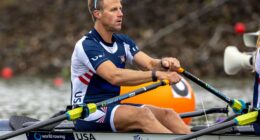Drowning is a real risk for those with autism. Nearly a third of parents with children on the spectrum say they’ve dealt with a close call around water. Drowning is also one of the leading causes of death for kids with autism. A program in Australia is working to ensure these statistics go down and to introduce some fun along the way.
WaterAbilities teaches water safety and survival swim skills to children with disabilities in the Canberra region. The service is offered at little to no cost. It’s an offshoot of CycleAbilities, which teaches bicycle road safety to the same population.
Carol Jennings, a co-founder of the water program, told ABC in Australia, “The whole team are allied health workers, so we draw on occupational therapy, exercise physiology, physiotherapy and early education, in addition to being swim school qualified.
“We’ve had a couple of little children with water trauma. They were terrified of the water six months ago because of near drowning experiences and now they’re actually swim-ready.”

The classes begin outside of the pool, with participants strengthening the muscles they’ll need for swimming before they jump in. This is especially helpful for the kids who are anxious around water.
Renee Zwikielberg has two children with autism, 9-year-old William and 7-year-old Sophie. William had nearly drowned twice before getting involved in the program.
Zwikielberg says, “At first, he didn’t even want to get in the water. He was afraid … and had a lot of anxiety about drowning given that it almost happened twice.”
They unsuccessfully tried a variety of programs before William enrolled in WaterAbilities. His mother says their lessons have been the perfect fit, allowing him to better understand water safety, become a stronger swimmer, and learn to have fun in the water.
READ RELATED: Is Jeremy Wade Married? His Personal Life, Net Worth And Career
The organizers behind CycleAbilities and WaterAbilities recognize the unique challenges of the kids they teach. Their website notes that their lessons incorporate inclusion, connection, individualized plans, and experience.

Their website says, “Our staff build a sense of encouragement, positive wellbeing and motivate each and every participant and family to see and embrace effort and small successes. Positive encouragement and guidance from well-trained, motivational allied health professionals and volunteers allow each participant to discover and develop their inner worth and desire to achieve mantra in a safe, supportive and fun environment.”
They add that this allows the children to go from believing they’re unable to do something to realizing they can accomplish what they set their minds to. The hope is that participants will ultimately be more comfortable trying new things.
The Australian Capital Territory Government spent $15,000 to help fund the WaterAbilities trial, which was also supported by Royal Life Saving ACT. That’s an organization committed to water safety in Australia.
Royal Life Saving ACT general manager Cherry Bailey says these courses are a much needed resource for families.

She explains, “The demand was obvious and really important. We want these children to be experiencing the same types of program opportunities as children without autism.”
The National Autism Association says that from 2009 to 2011, 91% of deaths that occurred after an autistic child wandered were due to accidental drowning.
Source: The Autism Site Blog




